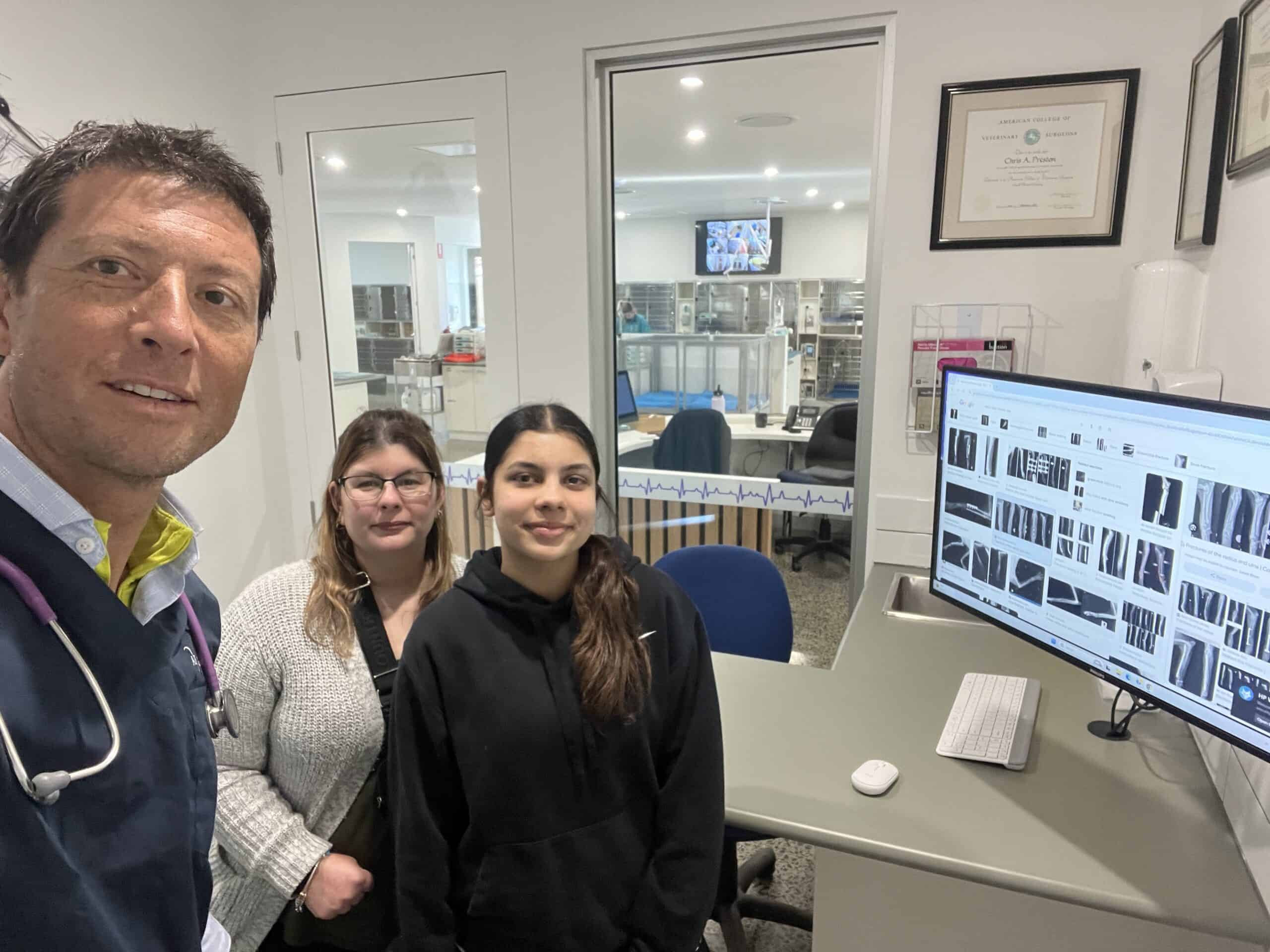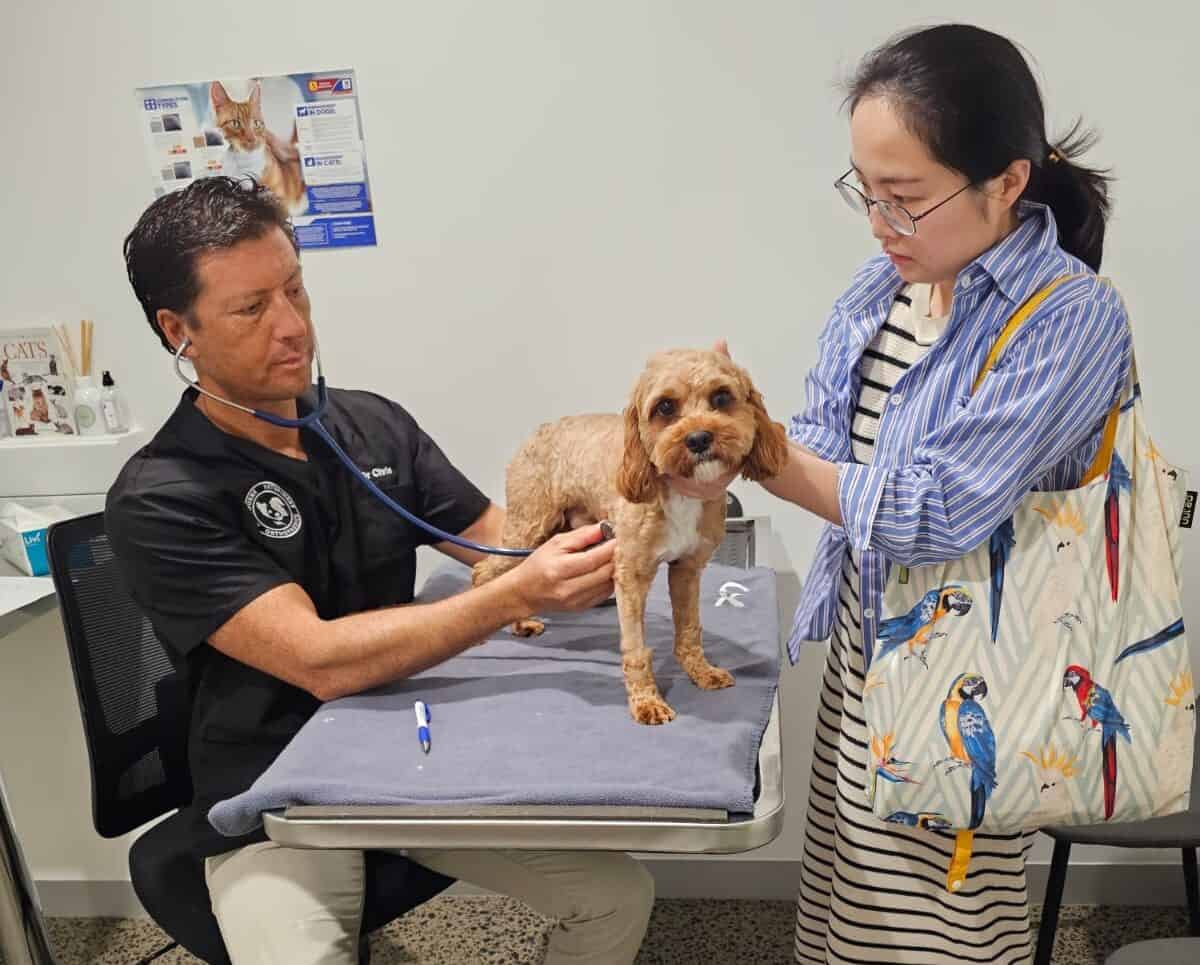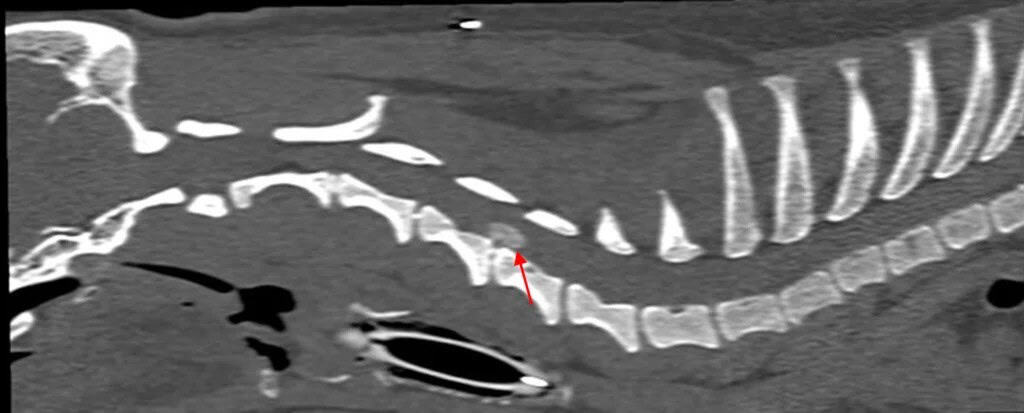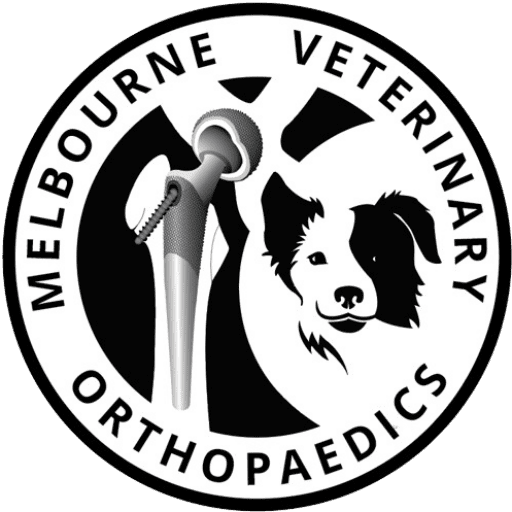Consultation
Free Teleconsults & Video Conferences
Book a Free Teleconsult: chat with us over zoom
Free Teleconsults & Video Conferences
Book a Free Teleconsult: chat with us over zoom
Our Consultation Process at MVO
Step 1
History
Obtaining a history is a crucial step in assessing and addressing an animal’s health concerns. We will get your pet’s history and listen to your concerns.

Step 2
Gait Analysis
Our vet will perform a lameness assessment outside to confirm which limb is affected and look at joint angles and weight distribution. Any weakness or incoordination will be evaluated.
Our Consultation Process at MVO
Step 1
History
Obtaining a history is a crucial step in assessing and addressing an animal’s health concerns. We will get your pet’s history and listen to your concerns.

Step 2
Gait Analysis
Our vet will perform a lameness assessment outside to confirm which limb is affected and look at joint angles and weight distribution. Any weakness or incoordination will be evaluated.
Step 3
Examination
A detailed orthopaedic and neurological evaluation will be performed to accurately identify pain, instability and abnormalities of joints. We also assess muscle mass, reflexes and coordination.

Step 3
Examination
A detailed orthopaedic and neurological evaluation will be performed to accurately identify pain, instability and abnormalities of joints. We also assess muscle mass, reflexes and coordination.

Step 4
Diagnosis
Once we have completed our examinations and tests we will give a diagnosis. Our team will then talk you through the appropriate treatment options.

Step 4
Diagnosis
Once we have completed our examinations and tests we will give a diagnosis. Our team will then talk you through the appropriate treatment options.

Veterinary Examination
History taking: The vet will start by asking about the animal’s medical history, including any recent symptoms, changes in behavior, diet, and environment.
Owner’s observations: You’ll be asked about any specific concerns or symptoms you’ve noticed, such as changes in limb use or activity level.
2. Physical Examination
General appearance: Checking overall condition and body condition.
Vital signs: Measuring temperature, heart rate, and respiratory rate.
Palpation: Feeling the body to check for abnormalities like swelling, or pain in different areas.
Auscultation: Using a stethoscope to listen to the heart and lungs.
Examination of specific systems: Inspecting the eyes, ears, mouth, skin, and joints, among other areas, depending on the symptoms. At MVO we will check the musculoskeletal system in detail.
3. Diagnostic Tests
Laboratory tests: Blood work, urine tests, or fecal examinations to diagnose infections, organ function issues, or other conditions.
Imaging: X-rays, ultrasound, or sometimes MRI/CT scans to visualise internal structures.
Specialty tests: Depending on the symptoms, tests like arthroscopy or myelography might be needed.
Veterinary Consultation
1. Discussion of Findings
The vet will explain the results of the examination and any diagnostic tests performed.
They will discuss potential diagnoses and the implications for your pet’s health.
2. Treatment Options
Medical treatment: Prescriptions for medications, dietary changes, or other non-surgical interventions.
Surgical options: If surgery is needed, the vet will explain the procedure, risks, benefits, and recovery expectations.
Lifestyle and management: Recommendations for changes in diet, exercise, or environmental adjustments to improve the animal’s well-being.
3. Treatment Plan
Developing a plan that outlines the steps for treatment, including any follow-up appointments or additional tests.
Providing guidance on how to care for your pet during the treatment period.
4. Client Education
Offering advice on home care, signs to watch for, and how to administer medications or perform any necessary procedures at home.
Addressing any questions or concerns you may have about your pet’s condition or the recommended treatment.
Dr Chris in consult with a dog with a broken leg.
Follow-up
Monitoring progress: Regular follow-up appointments may be necessary to monitor your pet’s progress and adjust the treatment plan as needed.
Adjustments: Modifying the treatment plan based on how your pet responds to initial treatments or if new symptoms arise.
